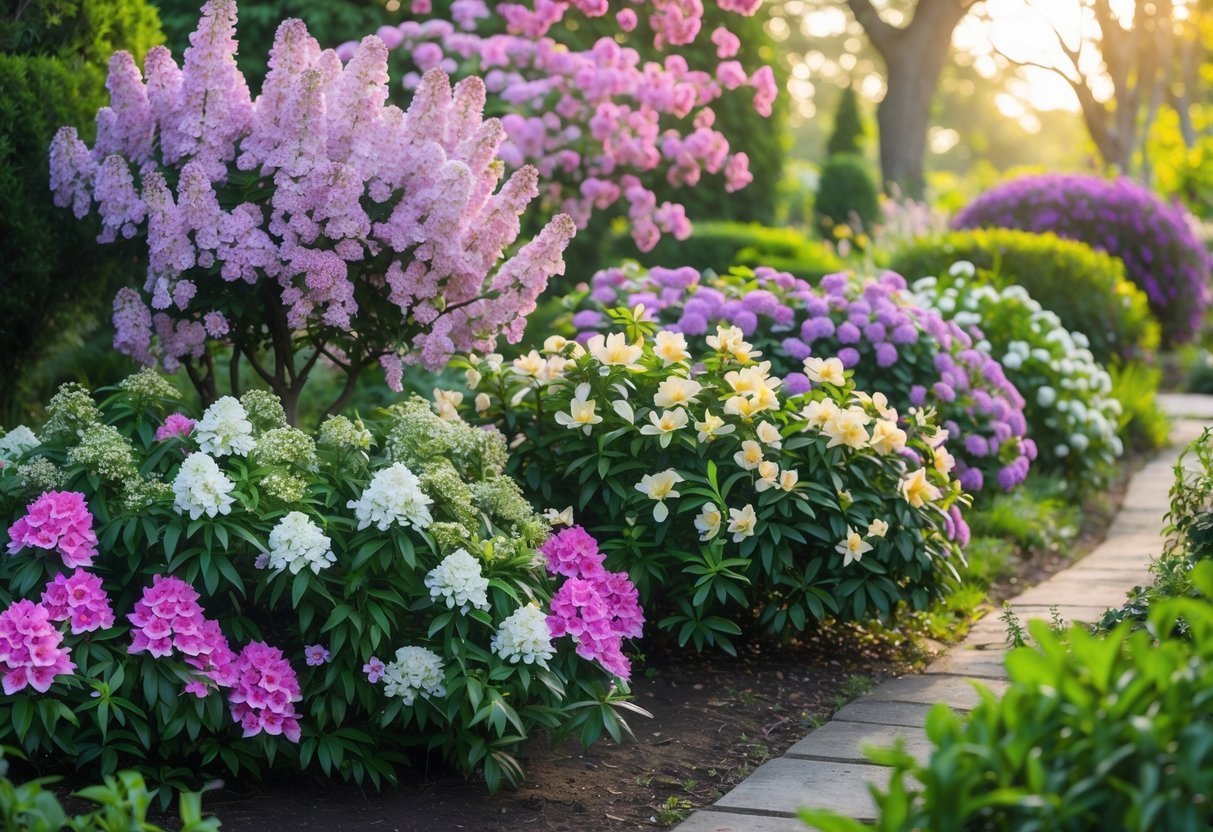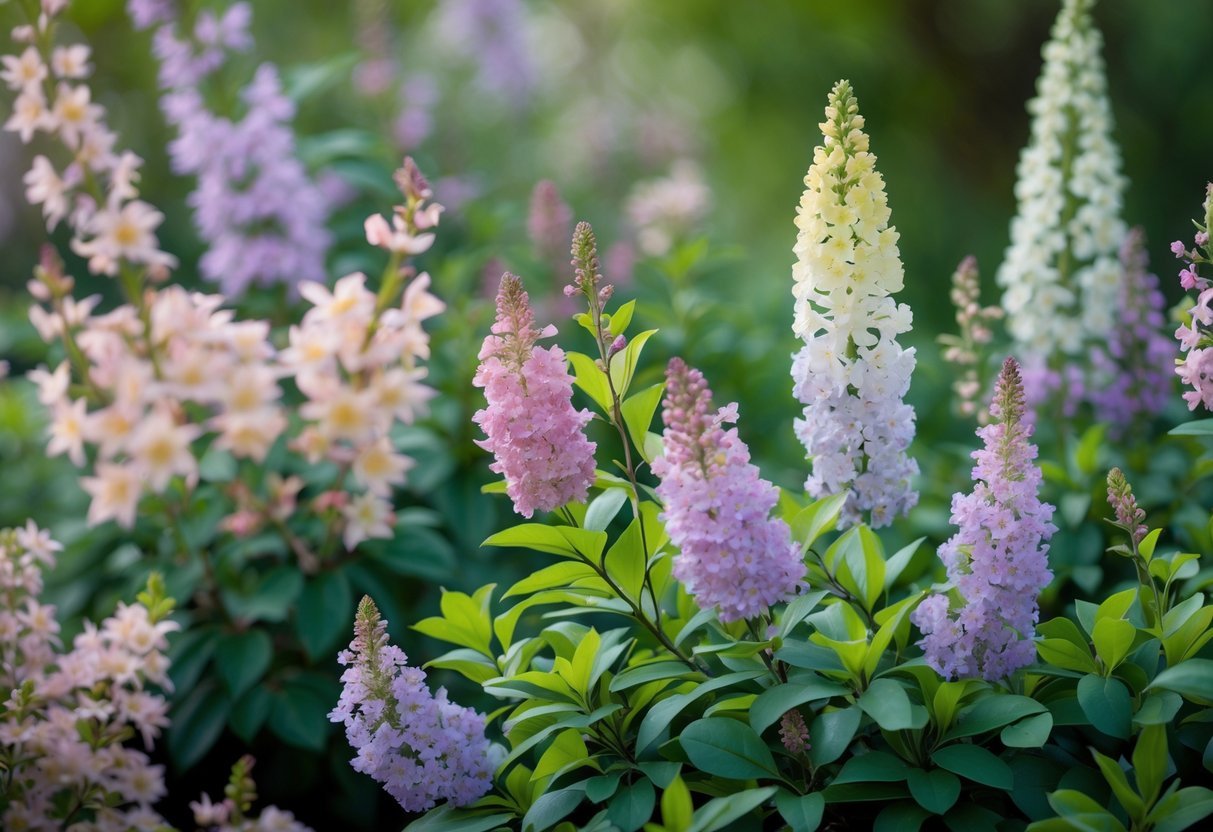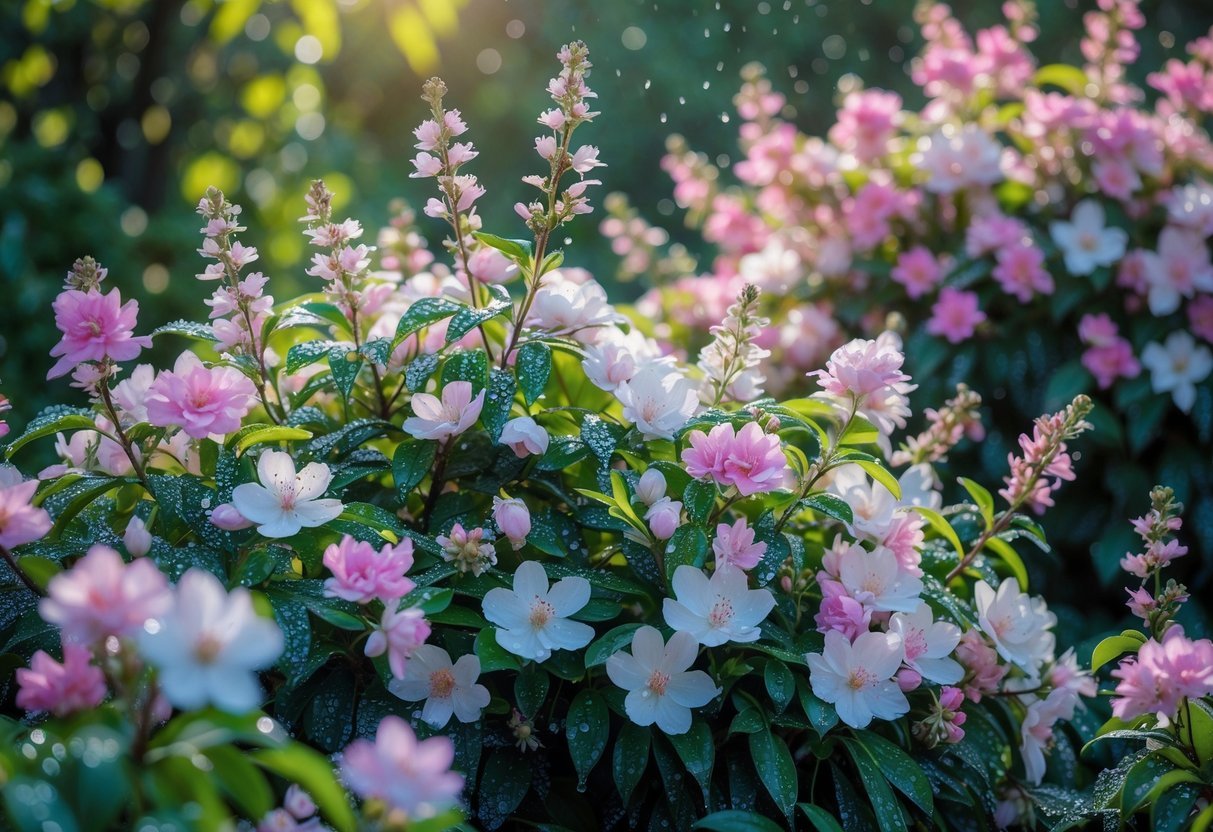Flowering shrubs with fragrant flowers bring a whole new level of magic to any garden. It’s not just about the looks—those scents can stop you in your tracks. Some of these plants are evergreen, so they’ll keep the air fresh all year, while others throw out intense waves of fragrance just for a season or two. Pick the right fragrant shrubs and suddenly your patio, entryway, or favorite garden path becomes a spot you want to linger in.
There’s a surprising range of scents out there—from sweet and floral to citrusy or spicy. And honestly, many of these shrubs are pretty easygoing. They’ll bloom for ages, keeping your garden smelling good with minimal fuss. If you’re after a garden that feels immersive and a bit more personal, these are a solid bet.
Top Fragrant Flowering Shrubs for Every Garden

Fragrant shrubs really are the secret sauce for a garden with character. They come in all sizes, bloom at different times, and some pack a punch with their scent while others are more subtle. Whatever your space or climate, there’s something out there for you.
Lilac Varieties and Their Scents
Lilacs (Syringa vulgaris) are one of those old-school favorites, famous for those dense, sweet-smelling clusters. The classic lilac blooms in late spring, usually with purple or white flowers.
If you’re looking for a longer show, the Bloomerang Lilac is worth a try—it reblooms from spring through fall, so you get that fresh scent again and again.
Lilacs are happiest in full sun and well-drained soil. Plant them where you’ll walk by often—trust me, you’ll want to catch that scent.
Mock Orange: A Classic Fragrant Bloomer
Mock Orange (Philadelphus coronarius) has a sharp, citrusy fragrance that’s hard to miss when it’s in bloom. The white flowers show up in late spring or early summer, and the scent is a dead ringer for orange blossoms.
It’s not too picky about soil and can handle some shade, but full sun gives you the best flower show. It works well as a hedge or just as a standout on its own.
Pollinators love it, and the scent lingers, especially as the day warms up.
Daphne and Winter Daphne
Daphne and winter daphne are compact, but don’t let their size fool you—their fragrance is intense. Daphne odora, for example, blooms in late winter or early spring, sometimes before anything else is awake in the garden.
The scent is this amazing blend of jasmine and citrus. They like a sheltered spot and slightly acidic, well-drained soil.
They’re a bit fussy about placement—keep them out of strong winds. But when everything else is bare, these guys really shine.
Korean Spice Viburnum
Korean Spice Viburnum (Viburnum carlesii) is a round, bushy shrub with a spicy, clove-like scent that’s pretty unique. It blooms in mid to late spring with pink-to-white flower clusters.
It’ll handle various soils and sun levels, but prefers at least some sun. It’s a tough, medium-sized shrub that fits nicely in borders or as a foundation plant.
If you’re a fan of cinnamon or nutmeg, you’ll appreciate this one—its scent is strongest in the morning.
Evergreen and Deciduous Shrubs with Fragrant Flowers
You’ll find fragrant shrubs in both evergreen and deciduous camps. Some keep their leaves (and often their scent) all year, while others put on a big show just for a few weeks. A few, like tea olive and gardenia, are garden classics for a reason.
Evergreen Shrubs: Year-Round Scent
Evergreen shrubs are the workhorses—leaves all year, and sometimes flowers that surprise you with their scent. Take mountain laurel, for example. It does well in colder areas and its cup-shaped blooms have a gentle floral aroma. Some viburnums, like ‘Mohawk’, also offer sweet-smelling white flowers.
Even the foliage of certain evergreens has a scent if you brush past it. These are great if you want something that looks good and smells good, with little effort. Plus, they’re handy for privacy and attracting birds.
Deciduous Shrubs for Seasonal Fragrance
Deciduous shrubs lose their leaves, but when they bloom, it’s usually a big deal. Lilac and mock orange are two of the best-known, filling the air with fragrance for a few glorious weeks.
Their bloom time is shorter than evergreens, but the scent can be more intense. They’ll need a bit of pruning now and then to keep them looking tidy.
If you like that “wow” factor in spring or summer, these shrubs are worth a spot in your garden.
Tea Olive and Osmanthus Fragrans
Tea olive (Osmanthus fragrans) is a bit of a sleeper hit. It’s evergreen, with little flowers that pack a surprisingly powerful, sweet scent—think apricot meets jasmine.
It’s flexible in terms of size and shape, so you can use it as a hedge or a specimen. It’s pretty tough, thriving in zones 7–10 and tolerating some shade.
Tea olive grows slowly and stays dense, so it doubles as a privacy plant. If you want something reliable and not needy, this is a good pick.
Gardenia: Elegant and Aromatic
Gardenias are famous for those glossy leaves and creamy, intensely fragrant flowers. They really are the definition of classic elegance in a garden.
They’re a bit picky—acidic soil, good drainage, and humidity are all musts. The scent is unmistakable and really fills the air.
They do need more attention than some, especially if you’re not in a warm, humid climate. But when they’re happy, they’re showstoppers. Best in zones 8–11, and they appreciate some afternoon shade.
Unique and Lesser-Known Fragrant Flowering Shrubs

If you’re after something a little different, there are plenty of fragrant shrubs that don’t get as much attention. Some have unusual scents, others bloom at odd times, and a few just look cool.
Summersweet and Clethra alnifolia
Summersweet (Clethra alnifolia) is a native shrub that throws out spikes of sweetly scented white or pink flowers in mid to late summer. Bees and butterflies can’t resist it.
It’s happiest in moist, acidic soil and does fine with some shade, so it’s a good fit for rain gardens or the edge of woods. Plus, it’s deer-resistant and its fall foliage turns a nice yellow-gold.
Sweetshrub and Calycanthus
Sweetshrub (Calycanthus spp.), sometimes called Carolina allspice, smells a bit like pineapple or strawberry—definitely not your typical floral scent. The unique maroon flowers show up in late spring to early summer.
It likes well-drained soil and will bloom in sun or part shade. Sweetshrub is also good for naturalizing in woodland areas, and the leaves themselves are aromatic if you give them a squeeze.
Honeysuckle and Lonicera Species
Honeysuckle (Lonicera) is a classic for good reason. The sweet fragrance from its tubular flowers is a magnet for hummingbirds and pollinators. Some are evergreen, some deciduous, and the color range is broad—white, yellow, pink, red.
They’re not fussy about soil and can adapt to sun or part shade. The scent really ramps up in the evening, so plant them near a patio if you can.
Buttonbush, Banana Shrub, and More
Buttonbush (Cephalanthus occidentalis) is a rounded shrub with funky, ball-shaped flower heads that smell sweet and attract all sorts of pollinators. It’s great for wet spots or near water.
Banana shrub (Michelia figo) is an evergreen with small, creamy flowers that genuinely smell like bananas. It’s best for warmer, sheltered spots.
If you want something different, these lesser-known shrubs might surprise you with their look and scent.
Designing a Fragrant Garden with Flowering Shrubs
Designing a fragrant garden isn’t just about throwing in a bunch of scented plants. You want to mix things up—different bloom times, colors, and scents. And if you’re into pollinators, these shrubs will keep your garden buzzing with life.
Choosing the Right Shrubs for Your Space
Think about how much space you have, what the sun’s doing, and what you want your garden to feel like. Shrubs like lilac, gardenia, and viburnum offer strong scents and a range of bloom colors. Compact types fit tight spots, while bigger shrubs can be used for hedging or as statement pieces.
Mix up heights and textures for a layered look. And don’t forget to plant them where you’ll actually catch the fragrance—along a path, near a bench, or right by the door.
Seasonal Interest and Long-Lasting Blooms
If you want fragrance for as long as possible, go for a mix of early, mid, and late bloomers. Mock orange brings scent in spring, butterfly bush takes over in summer, and some viburnums will surprise you in fall.
Deadheading (snipping off old flowers) helps keep things blooming and tidy. Combining shrubs with white, pink, and purple flowers keeps your garden colorful as the months roll on. With a bit of planning, you’ll have something smelling good from early spring right through to the first frost.
Attracting Pollinators and Wildlife
Fragrant flowering shrubs can be a real magnet for bees, butterflies, and even the occasional hummingbird. If you’ve got lilacs or butterfly bush in your yard, you’ve probably noticed how their strong scent and clusters of blooms pull in all sorts of winged visitors.
Mixing up your shrub choices—different smells, staggered bloom times—means there’s always something going on, and the local wildlife will thank you for it. It’s honestly pretty rewarding to watch your garden buzzing with life, not to mention the boost it gives to your plants.





